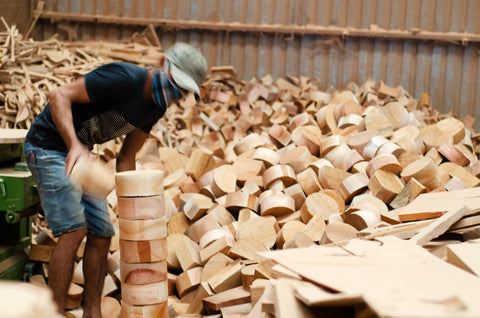Khaya mahogany wood
Fast-growing tree, wood is extremely strong, fairly easy to work and it has a beautiful red-brown color.
Khaya mahogany wood
Fast-growing tree, wood is extremely strong, fairly easy to work and it has a beautiful red-brown color.

Khaya who?
The name Khaya probably doesn't ring a bell, but it's originally an African tree species. And because of its red-brown color it's called African mahogany. Khaya is a fast-growing timber tree. Within the first year, a Khaya plant develops a deep root system, which makes it resistant to drought and it survives well in poor areas, such as in Vietnam.

Fast growing tree
The Khaya tree grows fast. Almost twice as fast as American mahogany. Within 10-12 years the tree is mature and gives fruits. They are round in shape and contain seeds. The seed oil is used for cooking. Due to the short growing and maturing period, Khaya is considered as sustainable. Unlike other imported woods, Khaya is non-invasive and does not harm the environment.

Local wood production
With support from international organizations, local farmers in Vietnam are establishing forest plantations at an increasing rate. These plantations are managed either independently or through cooperatives, enabling farmers to produce wood in a more sustainable way. This approach not only helps them secure better market prices for their products but also provides a more stable income. Additionally, many farmers collaborate to protect their forests from illegal logging, contributing to environmental conservation and sustainable development.

Sustainable wood
The Khaya wood used in our production is sourced from sustainable plantations. It is dried on-site, sawn to size, and carefully processed into a variety of high-quality goods. Traditionally valued for boat building, Khaya wood is also ideal for furniture and guitars due to its durability and beauty. Our handcrafted tableware is designed to last for years while adding a touch of elegance to any table setting.

Pattern and color
Freshly sawn, Khaya wood has a pink color that slowly changes to red-brown. The wood shows beautiful drawings caused by the cross thread. The sapwood of Khaya wood is usually yellowish in color. When fresh, the color difference between sapwood and heartwood is not great, but later it becomes much clearer under the influence of light and beautiful patterns are created.